
Seated Dignitary - The Nok People - Eastern Nigeria 250 B.C.
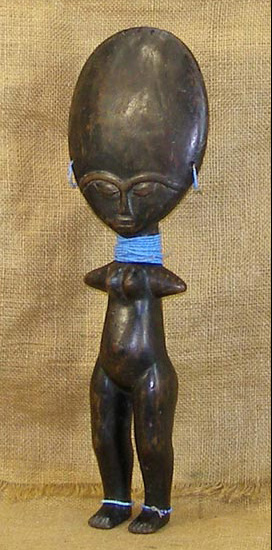
Ashanti Fertility Doll
This wooden statue from the Ashanti people of Ghana, Togo and the Ivory Coast measures over 17.25 inches tall. This piece is believed to be over 30 years old.
Ashanti (also Asante) artists tend to place fewer stylistic limits on themselves than many other makers of African art and masks. Once an autonomous nation known as the Asante Empire, and ruled by a powerful king, the Asante spent much of the 18th and 19th centuries in territorial disputes with British and Dutch forces.
Finally in 1902, after decades of defeat and decline, the Asante Empire was made part of the British Colony of the Gold Coast. Nonetheless Ashanti kings retained figurehead status after colonization, and even today great pride in the Ashanti King lives on in the tradition of the Golden Stool.
In 1960 the Gold Coast achieved independence from British Colonial rule and took the name the Republic of Ghana. It is here in Ghana, Togo and the Ivory Coast that the Ashanti people continue to make their homes.

Igbo Mask
This dancing mask from the Igbo people measures 27 inches tall and 14 inches wide.
The Igbo people number about 8 million and live primarily in Nigeria.

A Bust Of A Masai Couple - Hand Crafted Ebony Wood Carving
The exceptionally fine, detailed carving displays this warriors senior rank in his dress and marriage. With a reputation as fierce warriors and an arrogant demeanor, the Masai have largely managed to stay outside the mainstream development of Kenya and still maintain traditions, and their much treasured cattle herds.
Some young warriors have recently traveled into town, looking for salaried work, where their fierce reputation precedes them. They are eagerly hired as guards, as thieves rarely will bother a home or establishment that has a Masai guard.
The carving was done by one of the world-famous masters of wood: the Makonde Tribe of southern Tanzania, (one clan has now moved to Kenya), using only simple hand tools of axes, various-sized knives and sandpaper.
The Makonde craftsman carved each figure from a single piece of teak wood, which is an exceptionally hard and richly grained wood found in the borderland strip along the tropical areas in certain sections of Central Africa.
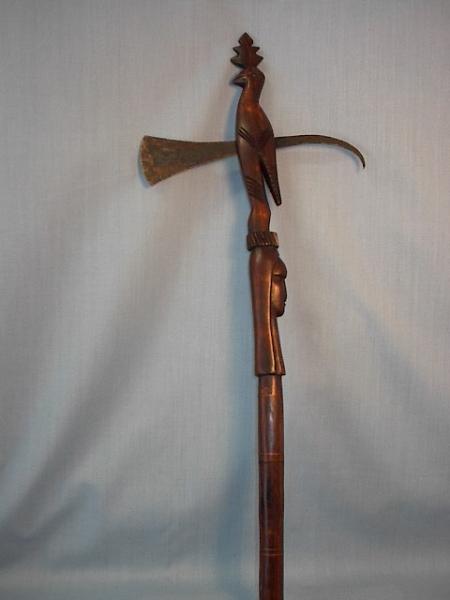
Ebony Wood Carved Axe With A Bird
This is a very unusual axe in that it has a removable head (blade). It has a wooden handle, made of ebony wood, inlaid with copper wire and made by the Rangi tribe of central Tanzania. The craftsman carved the handle from a single piece of black, ebony wood, which is an exceptionally hard and richly dark wood found in the borderland strip along the tropical areas in certain sections of Central Africa. The handle of this knife is very unique.
On the bottom half it is carved to portray the head of a Maasai warrior and on the top half, where the blade fits in, it is the carving of a Secretary Bird, which is found in the game parks of Kenya. The blade is steel, which today is made from melted-down springs of old cars and forged by the Chaga people.
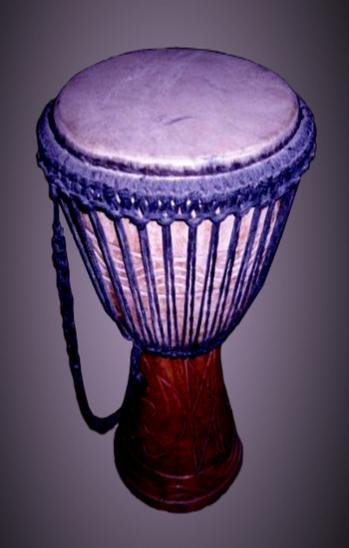
Djembe Drum - Ghana, West Africa Hand Crafted With Ebony Wood And Goat Skin
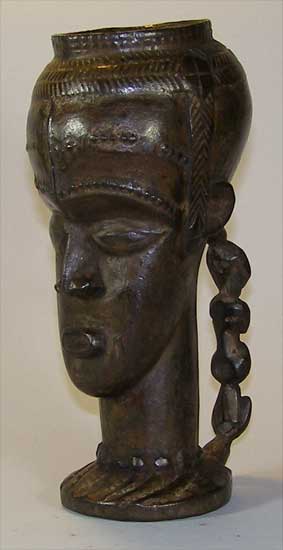
Kuba Cup
This hand-carved wooden cup from the Kuba people of the Congo is 8.5 inches tall. It is made of lenke wood, prized in Africa for its hardness.
The Kuba (Bakuba, Bushongo) are our people of the Congo region.
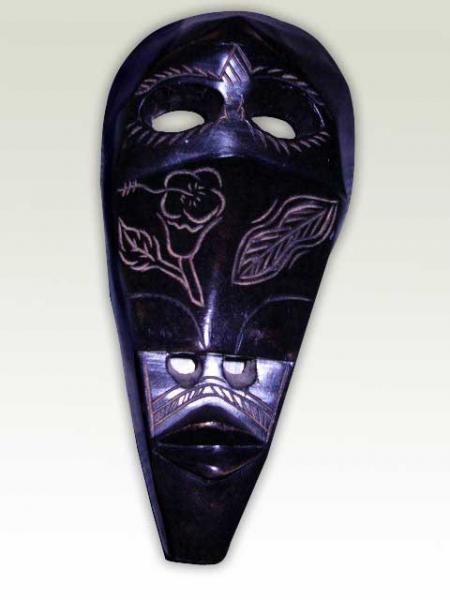
Bugaloo Mask - West Africa

Dogon Pot with Lid Side
This pot and lid, hand carved of wood by the Dogon people, is 27 1/4 inches tall and 8 1/2 inches wide.
The Dogon are an agrarian people of about 600,000 who live in the west African country of Mali and Burkina Faso. The Dogon are among the most famous iron workers in Africa. In earlier times, Dogon craftsmen had perfected methods of refining iron ore into steel, and Dogon blacksmiths were renowned for their skillfully made tools and weapons.
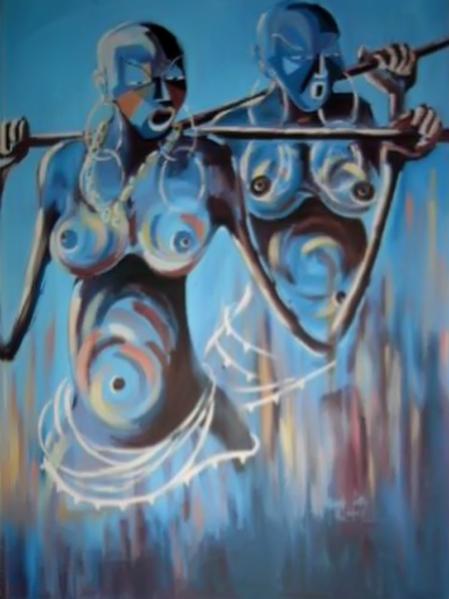
Masci Women
One of the most admirable pieces amongst the African oil paintings, this piece depicts Masai women returning from a long day in field. The beautiful coloring and uses of oil makes it more beautiful.
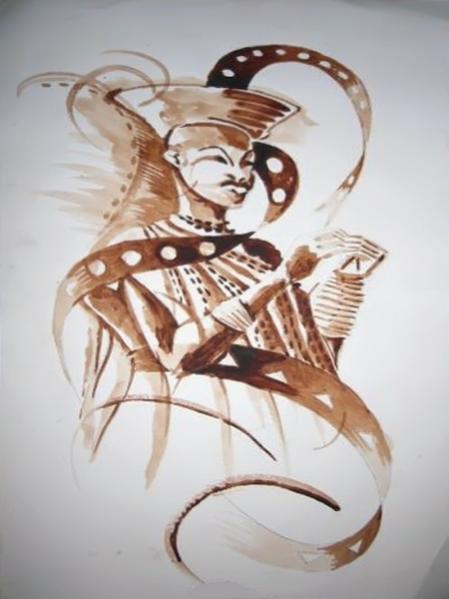
An African Sait - West African Oil painting
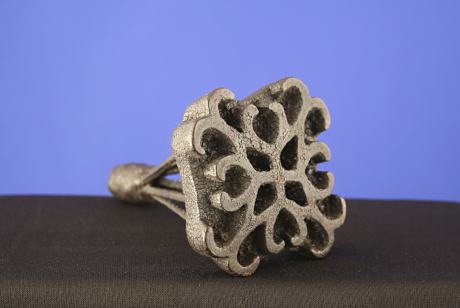
Nyame Dua - God's Altar

Ashanti Kings Stool
One of the finest hand carved, this traditional Ashanti Kings stool is 17 3/4 inches tall in the center, 25 1/2 inches long and 14 1/4 inches wide. It is made of wood covered with hand hammered copper.
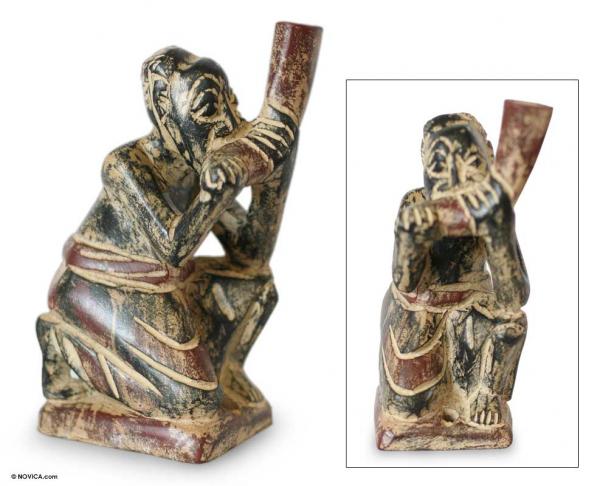
An Akan Announcer - Ghana
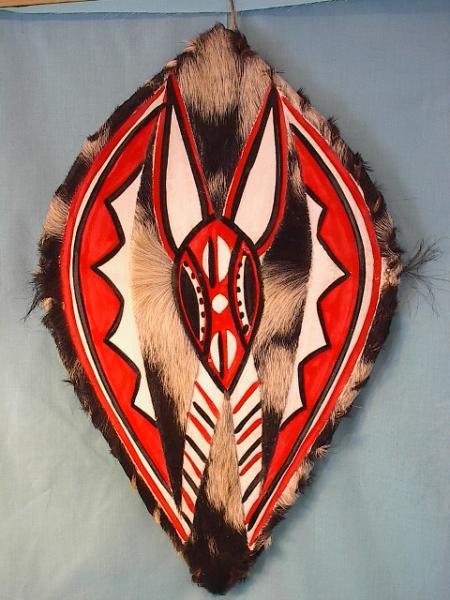
A Masai Shield
Its beautiful colors and geometric patterns are specifically chosen as portraying both traditional, symbolic importance and spiritual meanings to the Masai or Maasai.
The hide of this shield is made of leather from cattle. The patterns are made with the cow hair and with paint. The hide of the shield is stretched and tied over a frame made of bent twigs.
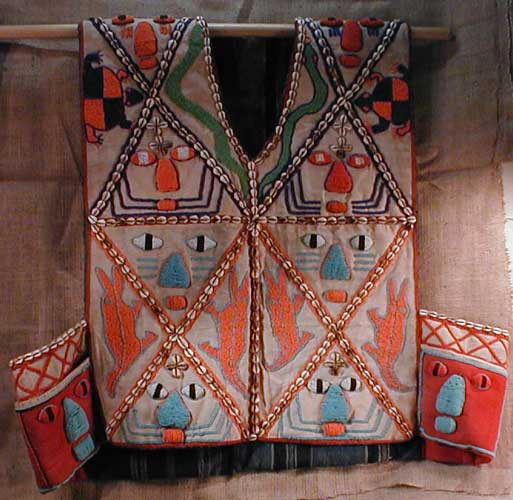
Yoruba King's Vest
African King's vest from the Yoruba people is 27.5 inches long and 21 inches wide at the chest.
The Yoruba people live in Nigeria and Benin (formerly the kingdom of Dahomey), and number nearly 24 million people. Beginning around 1000 AD, the Yoruba built a thriving network of cities and trading routes. Many of those cities survive today, and much of the original societal structure is preserved.
Yoruba kings, known as Oba, are still considered sacred, and still live in palaces in the center of town, surrounded by the residences of their lesser chiefs. Echoes of the Yoruba can even be felt in the Americas in the form of Santeria.
This religious tradition evolved in Cuba when the ritual practices of imported Yoruba slaves mixed with Christian theology of the new world. Santeria is still practiced today in many parts of the new world, and still retains it's recognizable Yoruba origins.
Last edited: